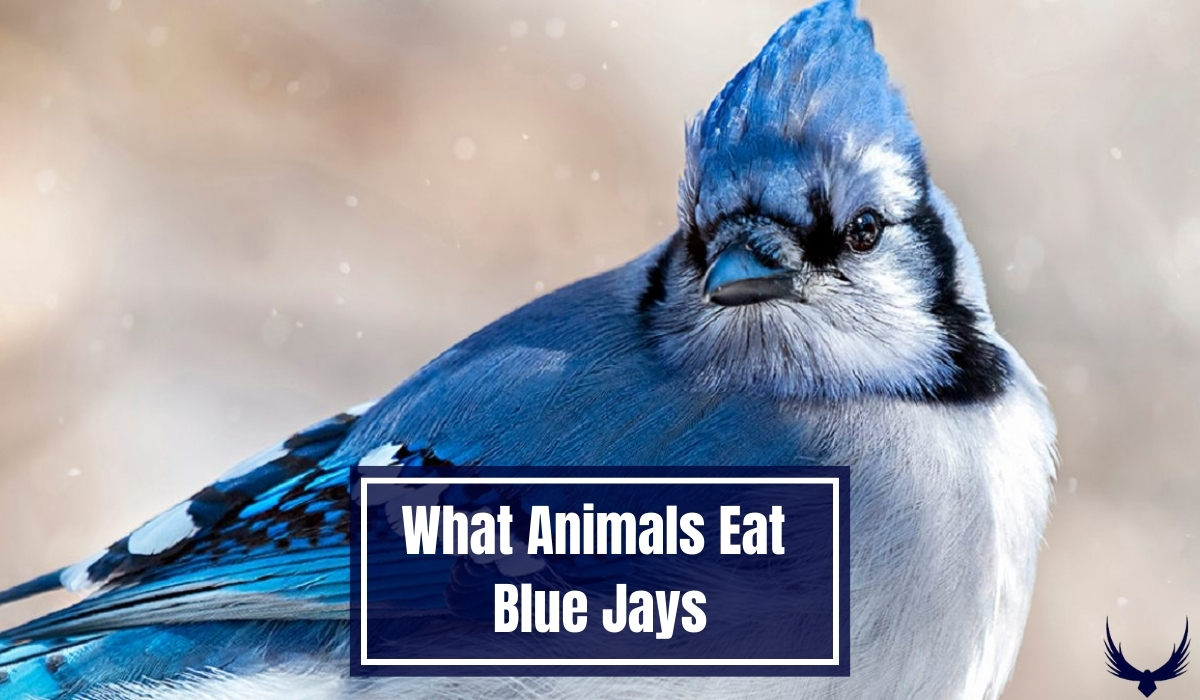Blue jays are beautiful birds known for their bright blue feathers and loud calls. They may seem tough, but these birds aren’t always at the top of the food chain. Many people wonder about the animals that eat blue jays and how these colorful birds protect themselves from danger.
Understanding the predators of blue jays helps us learn more about nature’s balance and the challenges these birds face in the wild. Let’s explore what animals eat Blue Jays as a meal and how these smart birds try to stay safe.
What Animals Eat Blue Jays?
Blue jays have several natural predators in the wild. Some mammals including cats, raccoons, and squirrels, may prey on blue jays or their eggs and nestlings.
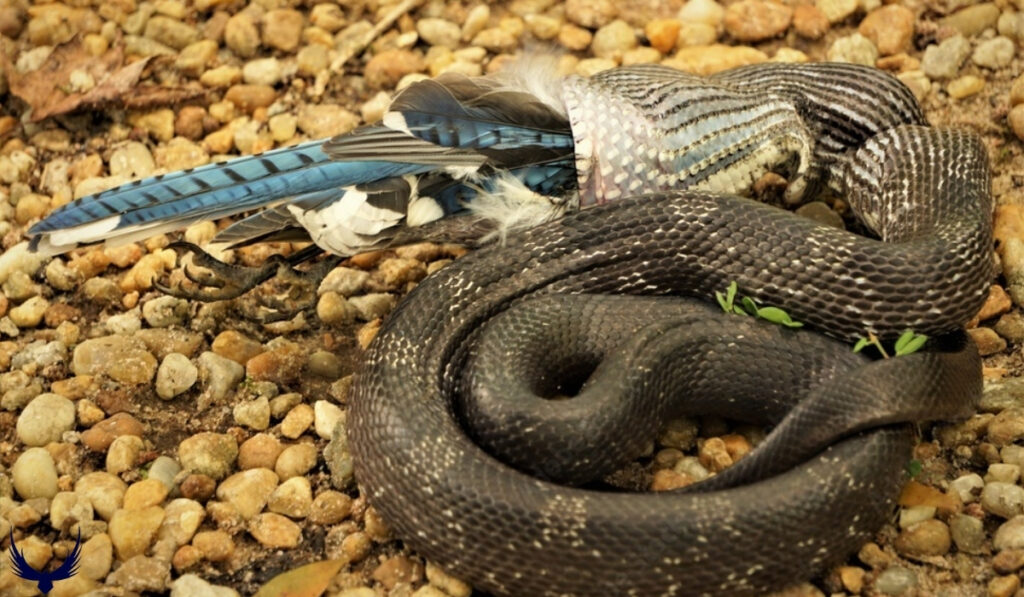
Snakes can also be a threat to young birds and eggs. While blue jays are known for their aggressive behavior, they are still vulnerable to these larger or more stealthy predators. Here are the few Blue Jay Predators:
Do Coyotes Eat Blue Jays?
Coyotes can eat blue jays, but it’s not very common. Coyotes are opportunistic eaters and will prey on birds if they get the chance.
Blue jay birds are quick and alert, making them hard for coyotes to catch. Coyotes focus on easier prey like small mammals but might eat a blue jay if they find one on the ground or catch it by surprise.
Do Foxes Eat Blue Jays?
Foxes sometimes eat blue jays when other food is scarce. They might hunt blue jays in spring or summer when the birds are nesting or feeding young on the ground, making them more vulnerable.
Foxes are clever hunters and can sneak up on blue jays, pouncing quickly to catch them. Like coyotes, foxes prefer easier prey and only target blue jays if the opportunity arises or they’re hungry.
Do Raccoons Eat Blue Jays?
Raccoons are most likely to catch blue jays at night. Raccoons are excellent climbers and can quietly sneak up when the jays are sleeping in roosting or on low branches.
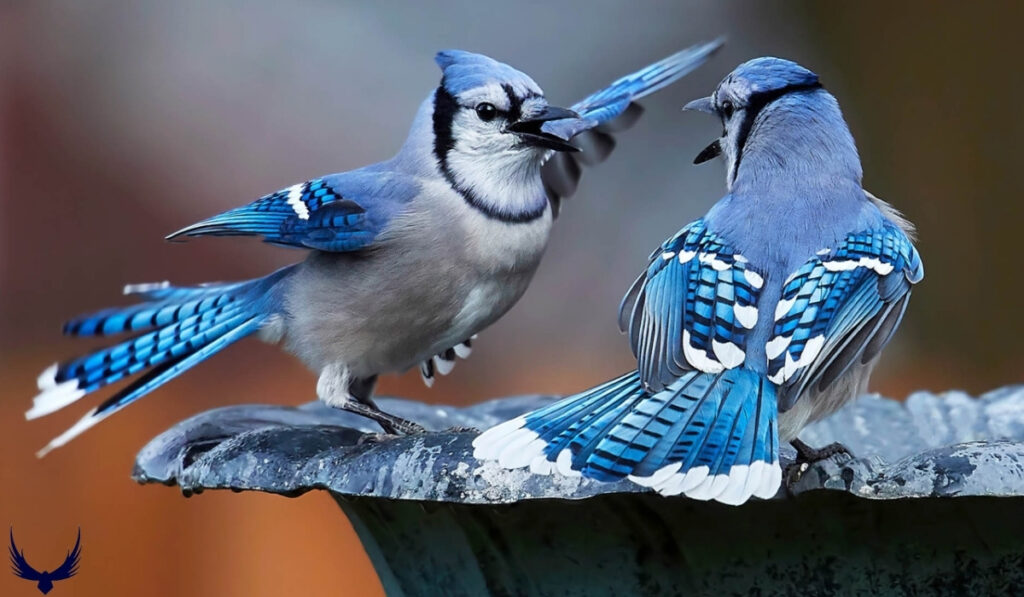
They might also raid nests for eggs or chicks. However, adult blue jays are alert and can fly away quickly, so raccoons more often target easier prey like insects, fruits, or smaller birds.
Do Squirrels Eat Blue Jays?
Squirrels don’t eat blue jays as they’re mainly herbivores. In rare cases of extreme hunger or opportunity, squirrels might raid bird nests for eggs or young chicks. This behavior is more common when other food sources are scarce in late winter or early spring.
If a squirrel does eat a bird, it’s likely to be a small nestling unable to defend itself, rather than a full-grown blue jay which would be too large and aggressive for a squirrel to tackle.
Do Wolves Eat Blue Jays?
Wolves rarely eat blue jays, as they prefer larger prey like deer, elk, or smaller mammals. Wolves might eat birds if food is scarce, or if the opportunity arises. This could happen during harsh winters when their usual prey is hard to find.
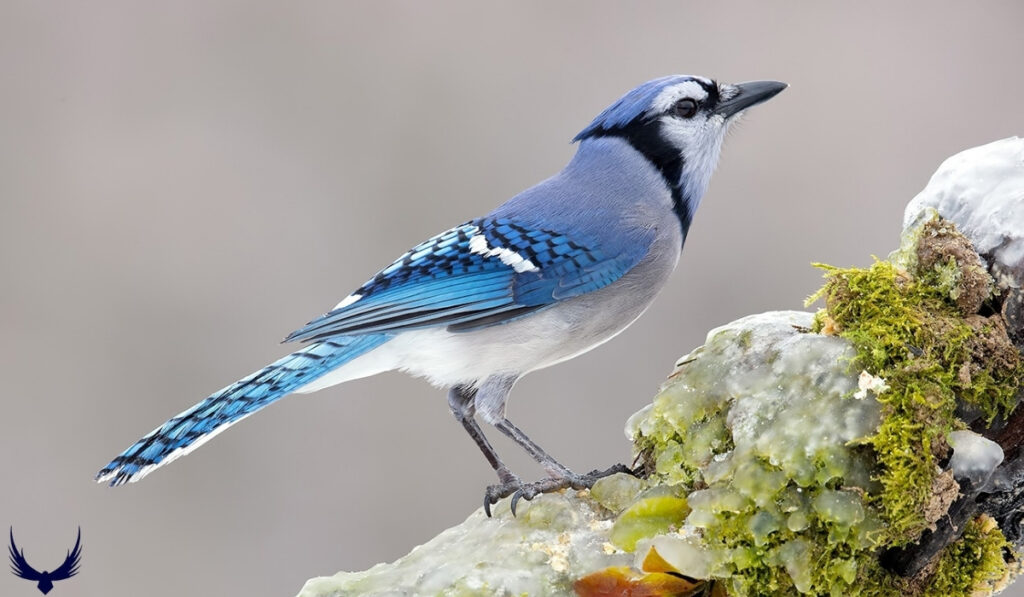
If a wolf were to eat a blue jay, it would likely be an opportunistic catch – perhaps a bird injured or on the ground, unable to fly away quickly. But overall, blue jays are too small and quick to be a regular part of a wolf’s diet.
Do Cats Eat Blue Jays?
Cats can eat blue jays. They hunt birds as part of their natural predatory instinct, regardless of whether they’re hungry. Cats stalk blue jays when the birds are on the ground or at bird feeders, using their stealth and quick reflexes to pounce.
Cats hunt jays during daytime when they are active in spring and summer when young. Inexperienced birds are easier targets for cats.
What Birds Eat Blue Jays?
Several larger birds of prey eat blue jays. These include hawks (like red-tailed hawks), eagles, owls (such as great horned owls), and falcons. Crows, which are about the same size as blue jays, may also prey on them.
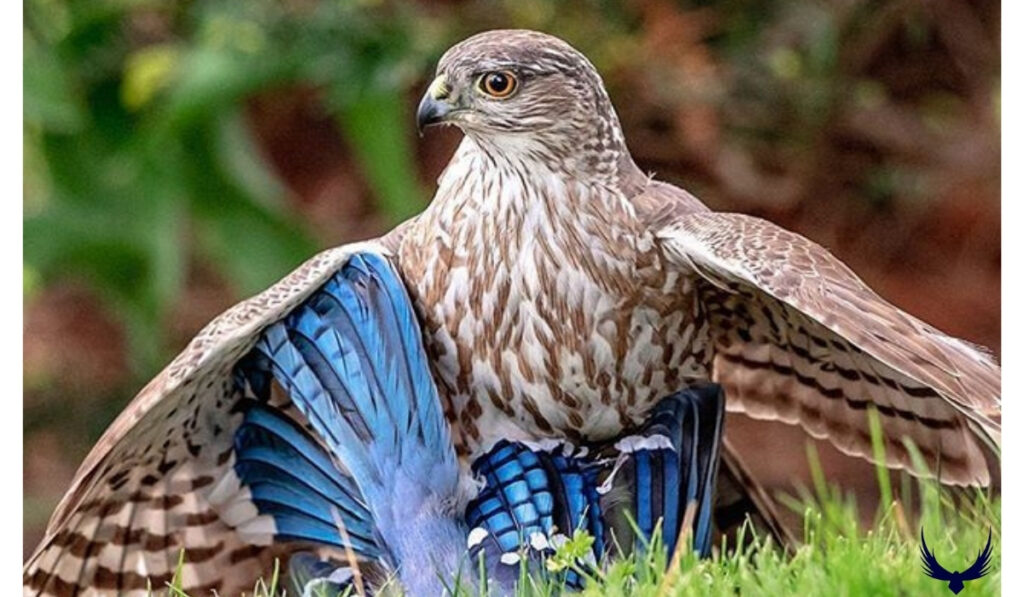
These predators target blue jays when other food sources are scarce or when they come across a vulnerable individual. They use their superior size, strength, and hunting abilities to catch and eat blue jays.
Do Hawks Eat Blue Jays?
Hawks do eat blue jays as part of their natural diet. They hunt blue jays because these birds provide a substantial meal. Hawks catch blue jays while in flight or when they’re exposed in open areas.
Hawks hunt these birds during daylight hours when both hawks and blue jays are active. However, blue jays are alert and noisy birds, warning others of danger which can make them challenging targets for hawks.
Do Owls Eat Blue Jays?
Owls can and do eat blue jays, though it’s not extremely common. This happens at night when most owls are active and blue jays are roosting. Owls hunt blue jays because they’re a good-sized meal and relatively easy to catch when asleep.
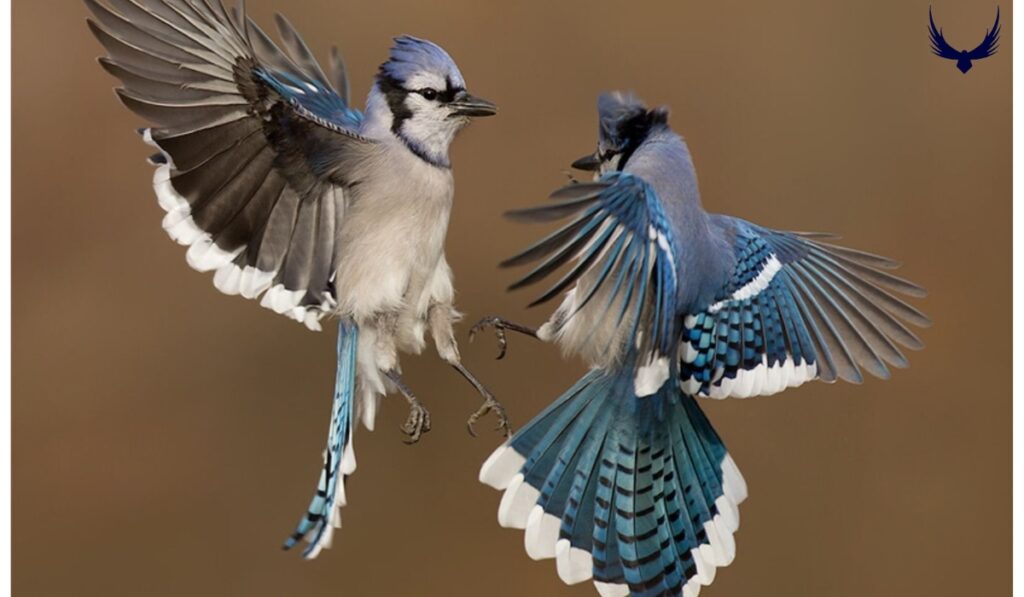
Owls can grab a sleeping blue jay from its perch using their silent flight and excellent night vision. However, since blue jays are diurnal (active during the day), they’re not a primary food source for most owl species.
Do Crows Eat Blue Jays?
Crows sometimes eat blue jays, especially young or injured ones. This happens when crows are very hungry and can’t find easy food.
They might attack blue jays near nests or feeding areas, using their strong beaks to kill and eat them. Crows are larger and more aggressive than blue jays, so they can overpower them.
Do Eagles Eat Blue Jays?
Eagles can eat blue jays though it’s not a common part of their diet. This might happen when eagles are hunting for smaller birds and spot an opportunity.
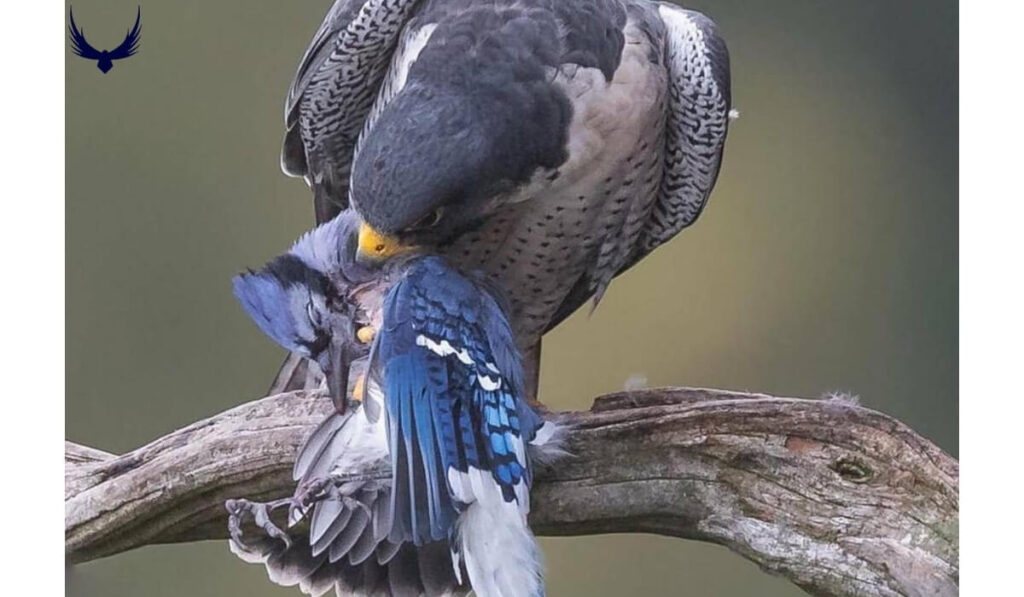
Eagles, being much larger and more powerful, can easily catch blue jays in flight and grab them from trees or the ground. They do this when their usual prey is scarce or when they come across a vulnerable blue jay.
Do Red Tailed Hawks Eat Blue Jays?
Red-tailed hawks do eat blue jays occasionally. They hunt blue jays when other prey like small mammals or easier-to-catch birds are scarce. Hawks use their excellent eyesight to spot blue jays from high up, then swoop down quickly to catch them by surprise.
They might grab blue jays in flight or snatch them from trees using their sharp talons to capture and kill their prey before eating it.
Do Great Horned Owls Eat Blue Jays?
Great horned owls do eat blue jays at night when blue jays are roosting. Owls are silent flyers, allowing them to sneak up on sleeping blue jays without being detected.
They use their excellent night vision and hearing to locate blue jays in trees, then swoop in to grab them with powerful talons. Owls may target blue jays when other preferred prey like rodents are less available or to add variety to their diet.
Can You Eat Blue Jays?
Eating blue jays is not recommended and is illegal in many places. Blue jays are protected under wildlife conservation laws in countries like the United States, making it unlawful to hunt or consume them.
They’re also not considered a traditional food source and may carry parasites or diseases that could be harmful to humans.
How do Blue Jays Protect Themselves from Predators?
Blue Jays are clever Blue birds that use various strategies to keep themselves safe from harm. They have developed several ways to protect themselves from different predators and dangers in their environment. Let’s explore these methods in detail:
Loud Alarm Calls: One of the most recognizable features of Blue Jays is their loud, harsh call. When they spot a predator, they use this call as an alarm system.
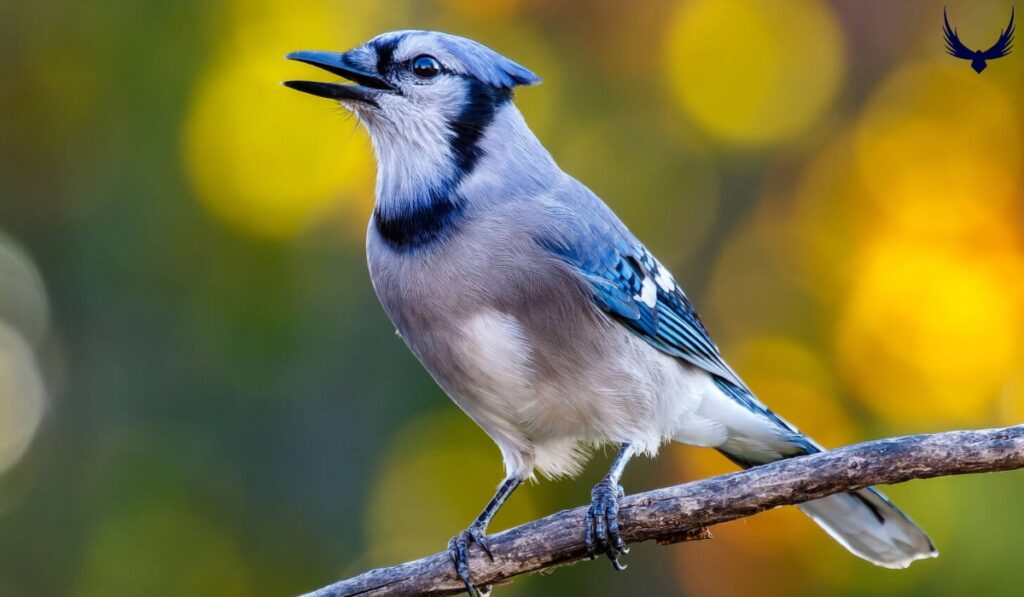
They screech loudly to warn other Blue Jays and even other bird species in the area. This not only alerts others to the danger but can also startle and confuse the predator, giving the Blue Jay time to escape.
Mobbing Behavior: Blue Jays are known for their bravery when it comes to defending their territory. When they see a threat, especially larger birds of prey or cats, they often gang up with other Blue Jays. This group will swoop down on the predator, making loud noises and even pecking at it. This “mobbing” behavior can be very effective in driving away threats.
Quick and Agile Flight: Blue Jays are excellent flyers. They can change direction quickly and maneuver through trees with ease. This agility helps them escape from predators that might be chasing them. They can also fly in a zig-zag pattern, which makes it harder for predators to catch them.
Nesting Habits: When it comes to protecting their young, Blue Jays are very careful. They build their nests in dense trees or shrubs, choosing spots that are hard for predators to reach.
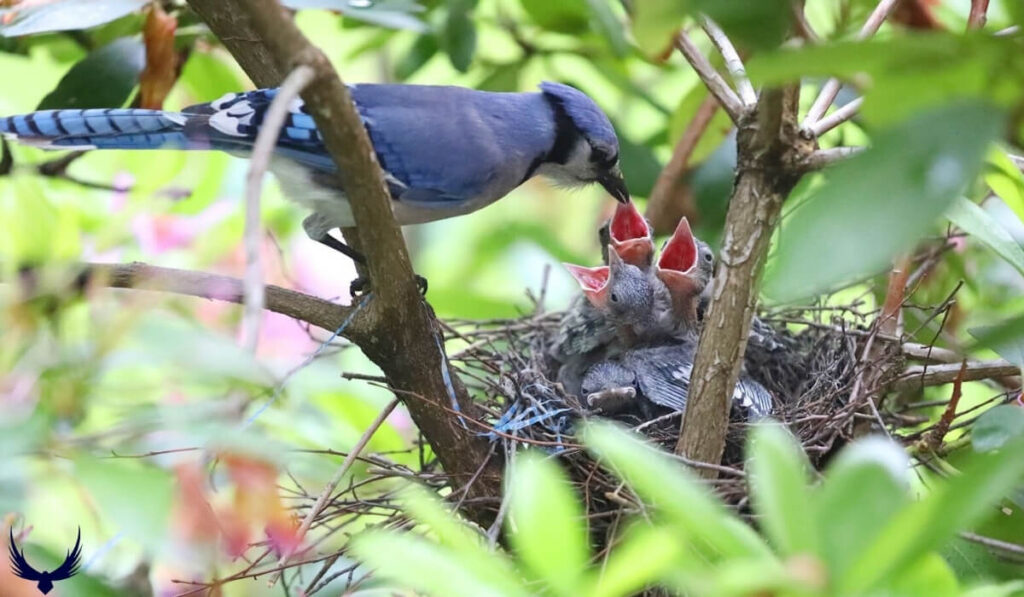
The female Blue Jay is sneaky when building the nest, often approaching it from different directions to avoid leading predators straight to it.
Mimicry: Blue Jays are excellent mimics. They can imitate the calls of hawks, which are predators that other birds fear. By making hawk-like sounds, Blue Jays can scare away smaller birds from food sources and confuse or deter their own predators.
Food Caching: Blue Jays are known to hide food in various places for later use. This behavior, called caching, helps them have food available even when predators are around, reducing the time they need to spend out in the open looking for food.
Vigilance: Blue Jays are always on the lookout for danger. They have excellent eyesight and are constantly scanning their surroundings. This vigilance allows them to spot threats early and react quickly.
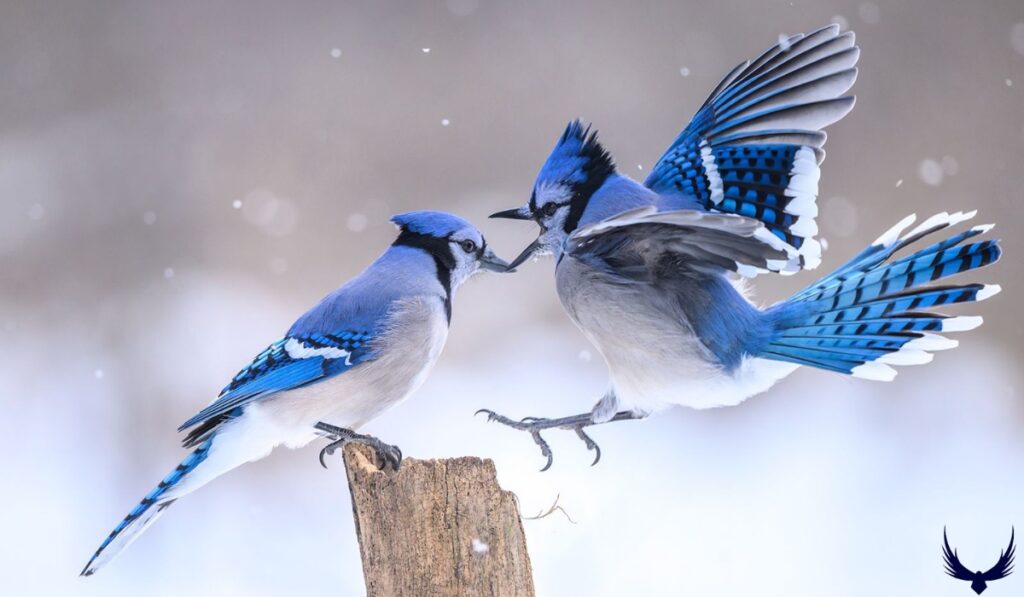
Group Living: Blue Jays often live and travel in family groups or small flocks. This provides safety in numbers, as there are more eyes to watch for danger. It also means there are more birds to join in mobbing a predator if needed.
FAQs – What Eat Blue Jays?
Do Squirrels Eat Blue Jay Eggs?
Squirrels sometimes eat blue jay eggs. They are opportunistic eaters and will raid bird nests when they find them. Squirrels might steal eggs from blue jay nests when other food is scarce or simply to supplement their diet with protein-rich eggs.
Can You Eat Blue Jay Eggs?
It’s possible to eat blue jay eggs, but it’s not recommended or legal in most places. Blue jays are protected under the Migratory Bird Treaty Act in the United States, making it illegal to take or possess their eggs. Additionally, their eggs are small and not commonly consumed by humans.
Do Crows Eat Blue Jay Eggs?
Crows do eat blue jay eggs when they get the chance. This happens during the spring breeding season when blue jays are nesting. Crows are intelligent and always on the lookout for an easy meal. They may raid blue jay nests when the parent birds are away and eating the eggs. This behavior is part of the crow’s survival strategy, as eggs provide a rich source of nutrients.
What do Blue Jays Eat?
Blue jays are omnivorous birds with a varied diet. They eat nuts, seeds, and acorns, but also enjoy fruits, insects, and small animals like frogs or mice. Blue jays are known to visit bird feeders in gardens, where they often snack on sunflower seeds and peanuts.

